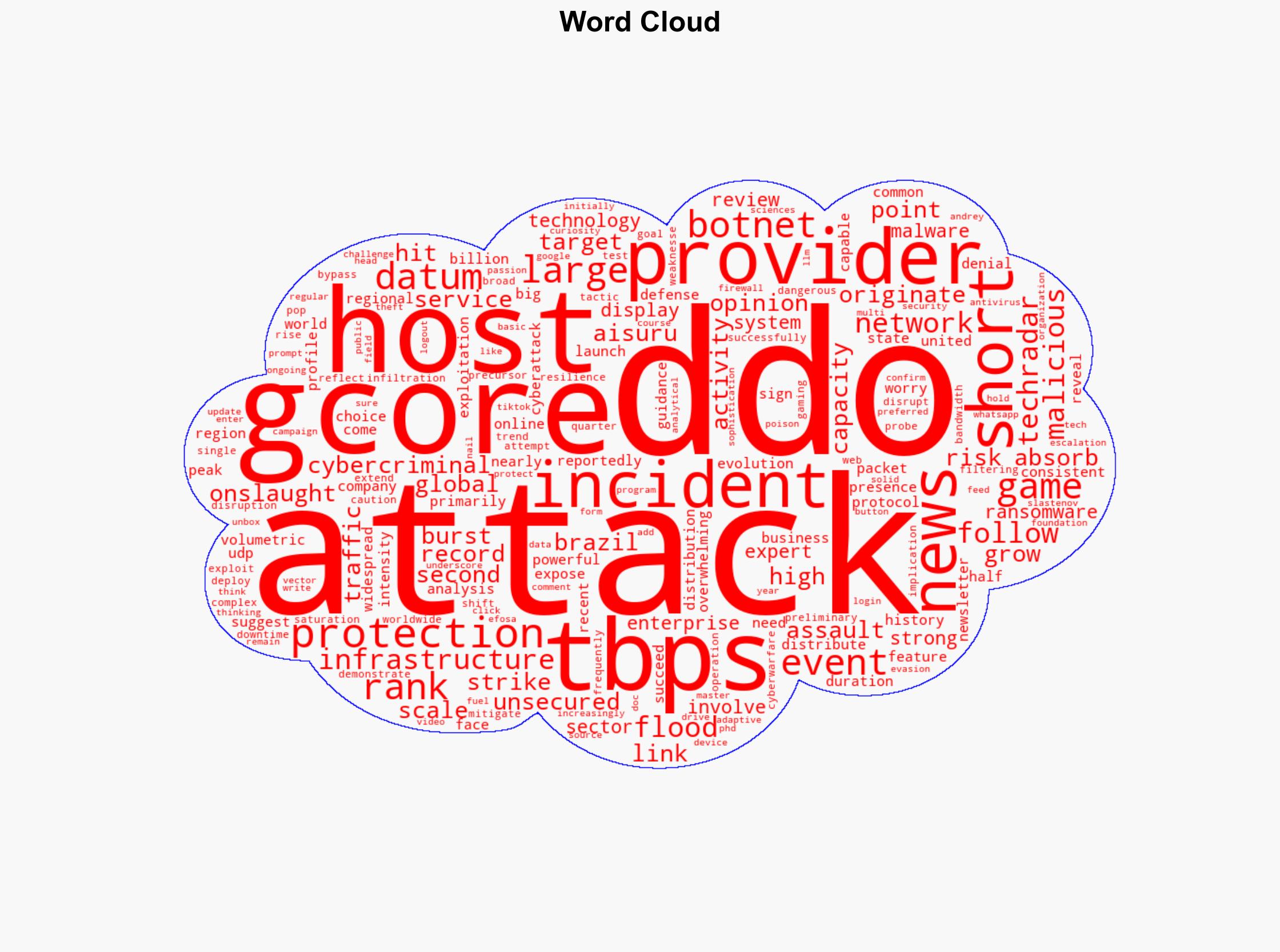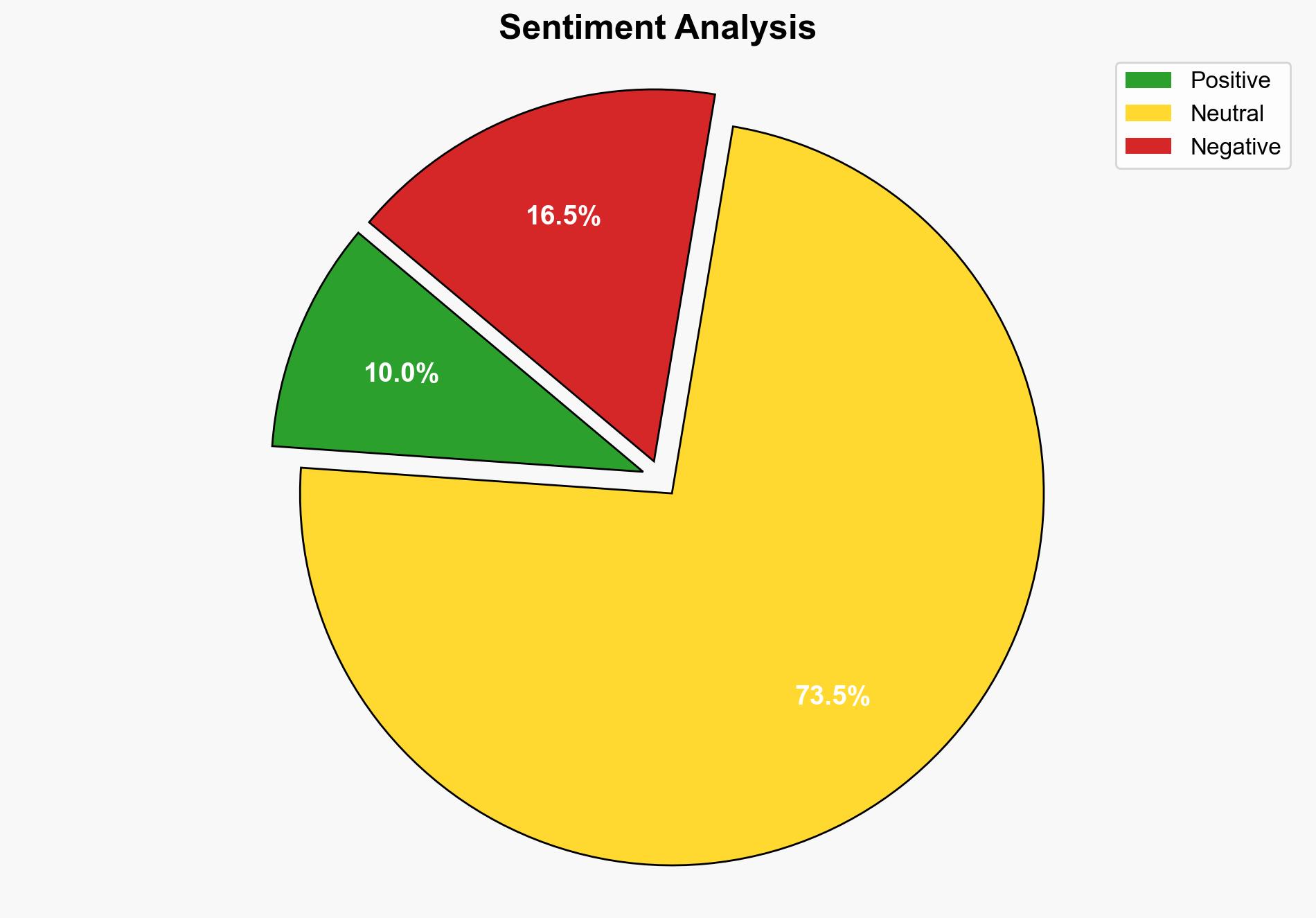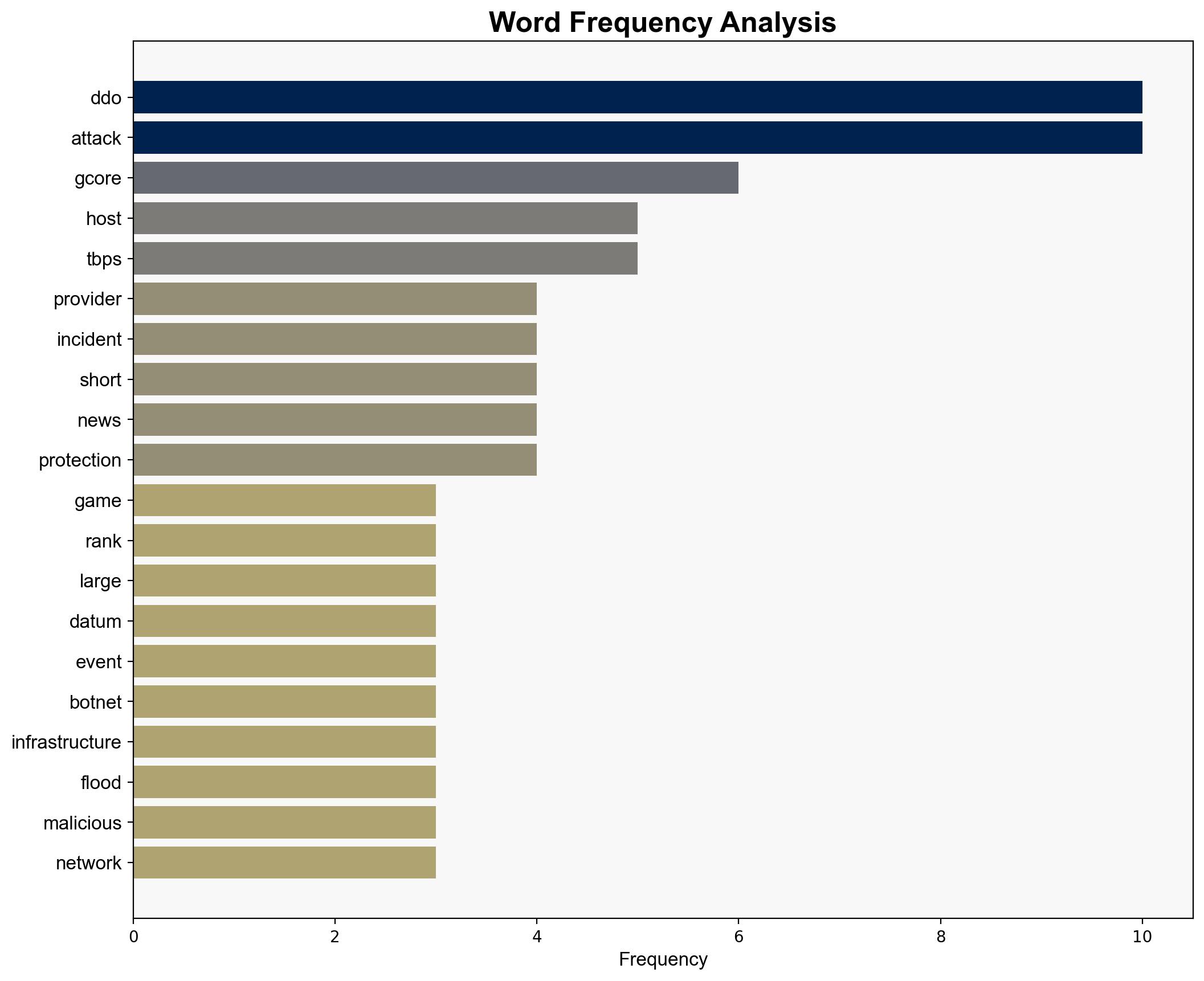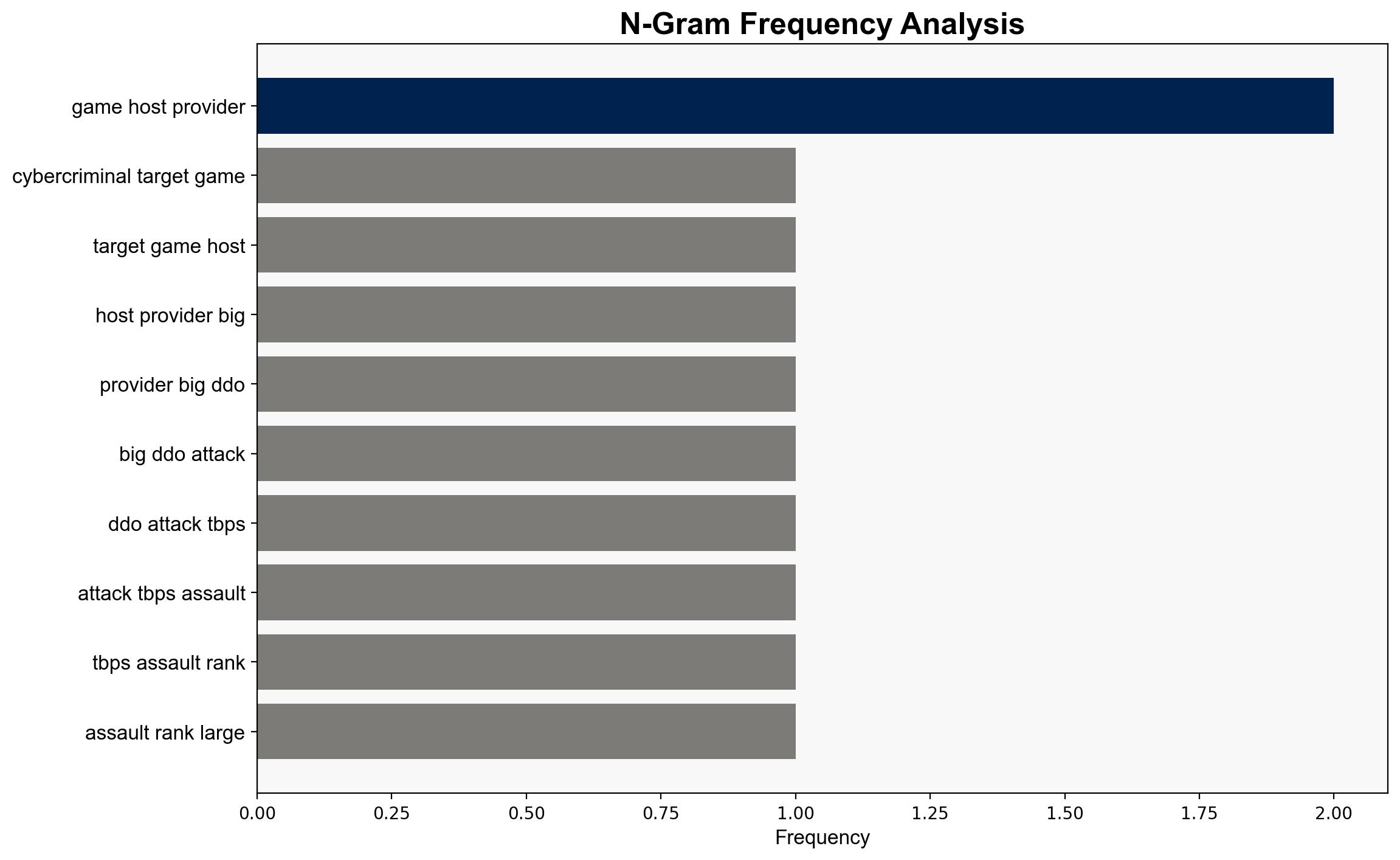Cybercriminals targeted a gaming hosting provider with one of the biggest DDoS attacks ever – 6TBps assault ranks in the top 10 of the largest DDoS onslaughts recorded – TechRadar
Published on: 2025-10-18
Intelligence Report: Cybercriminals targeted a gaming hosting provider with one of the biggest DDoS attacks ever – 6TBps assault ranks in the top 10 of the largest DDoS onslaughts recorded – TechRadar
1. BLUF (Bottom Line Up Front)
The most supported hypothesis is that the DDoS attack on the gaming hosting provider was a test of resilience and a precursor to more complex operations involving malware or ransomware. This conclusion is drawn with a moderate confidence level based on the structured analysis of the attack patterns and the involvement of the Aisuru botnet. It is recommended that gaming and hosting providers enhance their cybersecurity measures, focusing on DDoS mitigation and monitoring for potential follow-up attacks.
2. Competing Hypotheses
1. **Hypothesis A**: The DDoS attack was primarily a test of the gaming hosting provider’s defenses, intended to probe for vulnerabilities and prepare for subsequent, more sophisticated attacks involving malware or ransomware.
2. **Hypothesis B**: The attack was an isolated incident aimed at causing disruption and financial loss to the gaming hosting provider, with no immediate follow-up operations planned.
Using the Analysis of Competing Hypotheses (ACH) 2.0, Hypothesis A is better supported due to the attack’s characteristics, such as its short duration, high intensity, and the use of the Aisuru botnet, which has been linked to more complex cyber operations.
3. Key Assumptions and Red Flags
– **Assumptions**:
– The Aisuru botnet’s involvement suggests a capability for more complex operations.
– The attack’s short duration implies a strategic probing rather than a sustained disruption effort.
– **Red Flags**:
– Lack of information on the attackers’ identity or motives.
– Potential bias in attributing the attack solely to the Aisuru botnet without considering other actors.
– **Missing Data**:
– Detailed forensic analysis of the attack vectors and payloads.
– Insights into the attackers’ communication or coordination channels.
4. Implications and Strategic Risks
The attack underscores the growing sophistication and intensity of cyber threats facing the gaming and hosting sectors. There is a risk of cascading effects if the attack is part of a broader campaign targeting multiple infrastructure providers. The incident highlights vulnerabilities in unsecured networks, particularly in regions like Brazil and the United States, which could be exploited for future attacks. Geopolitically, such attacks could strain international relations if state-sponsored actors are involved.
5. Recommendations and Outlook
- Enhance DDoS mitigation strategies, including real-time monitoring and adaptive defense mechanisms.
- Conduct regular security audits and penetration testing to identify and address vulnerabilities.
- Engage in information sharing with industry peers and cybersecurity agencies to stay informed about emerging threats.
- Scenario Projections:
- **Best Case**: Strengthened defenses deter future attacks, and no further incidents occur.
- **Worst Case**: The attack is a precursor to a coordinated campaign involving data breaches and ransomware.
- **Most Likely**: Increased frequency of similar attacks as cybercriminals test defenses and refine their tactics.
6. Key Individuals and Entities
– **Gcore**: The gaming hosting provider targeted in the attack.
– **Aisuru Botnet**: The botnet infrastructure linked to the attack.
7. Thematic Tags
national security threats, cybersecurity, counter-terrorism, regional focus





